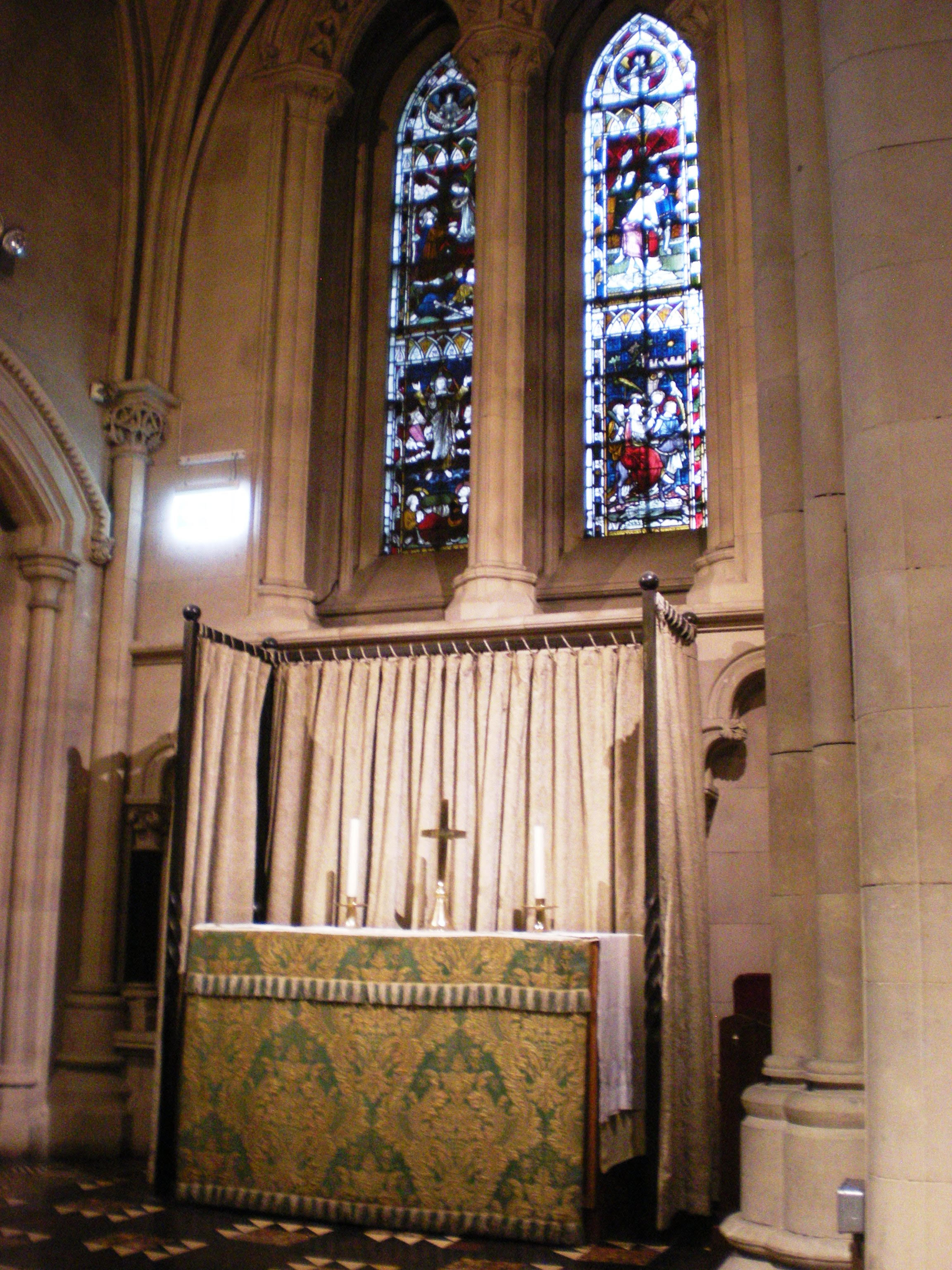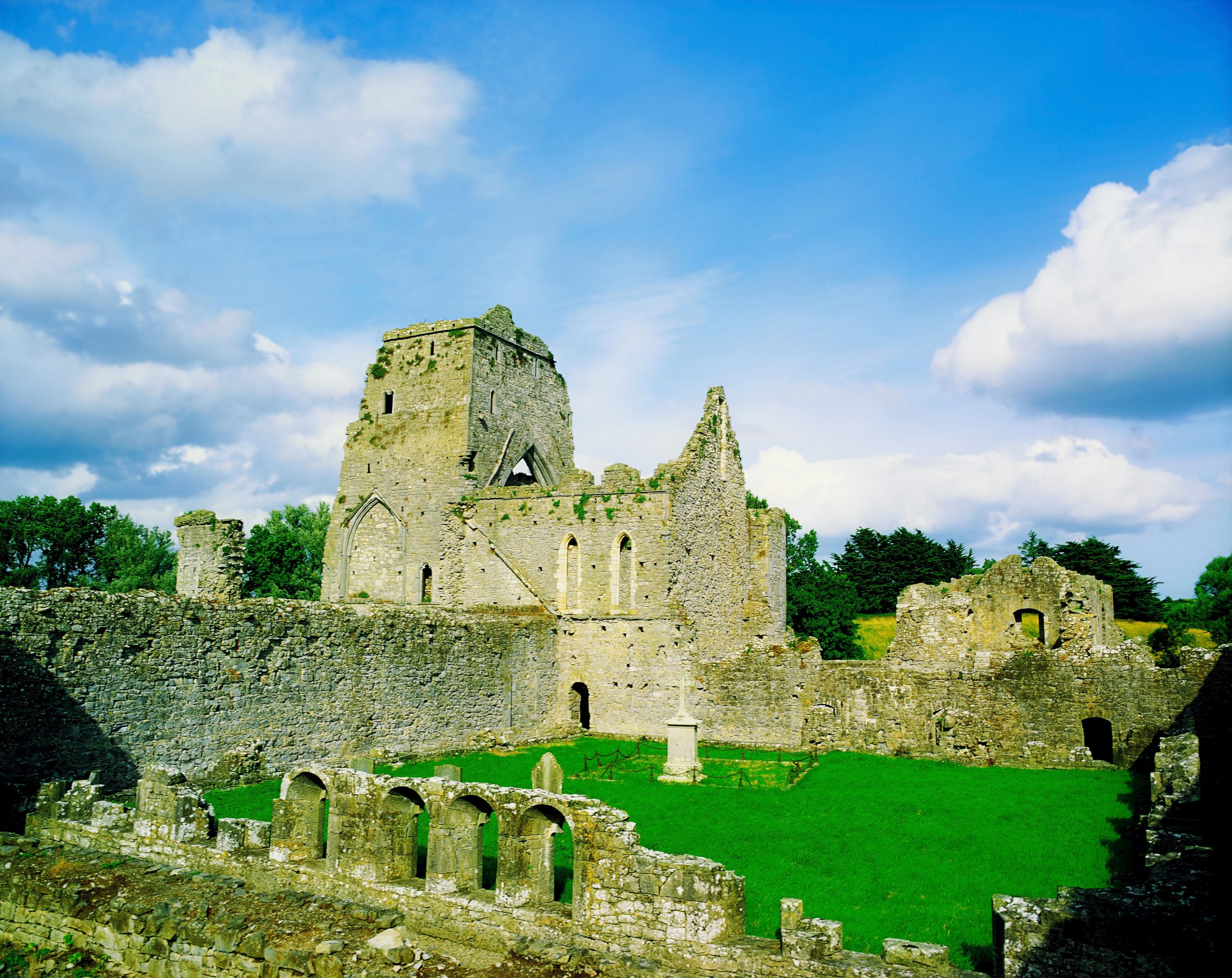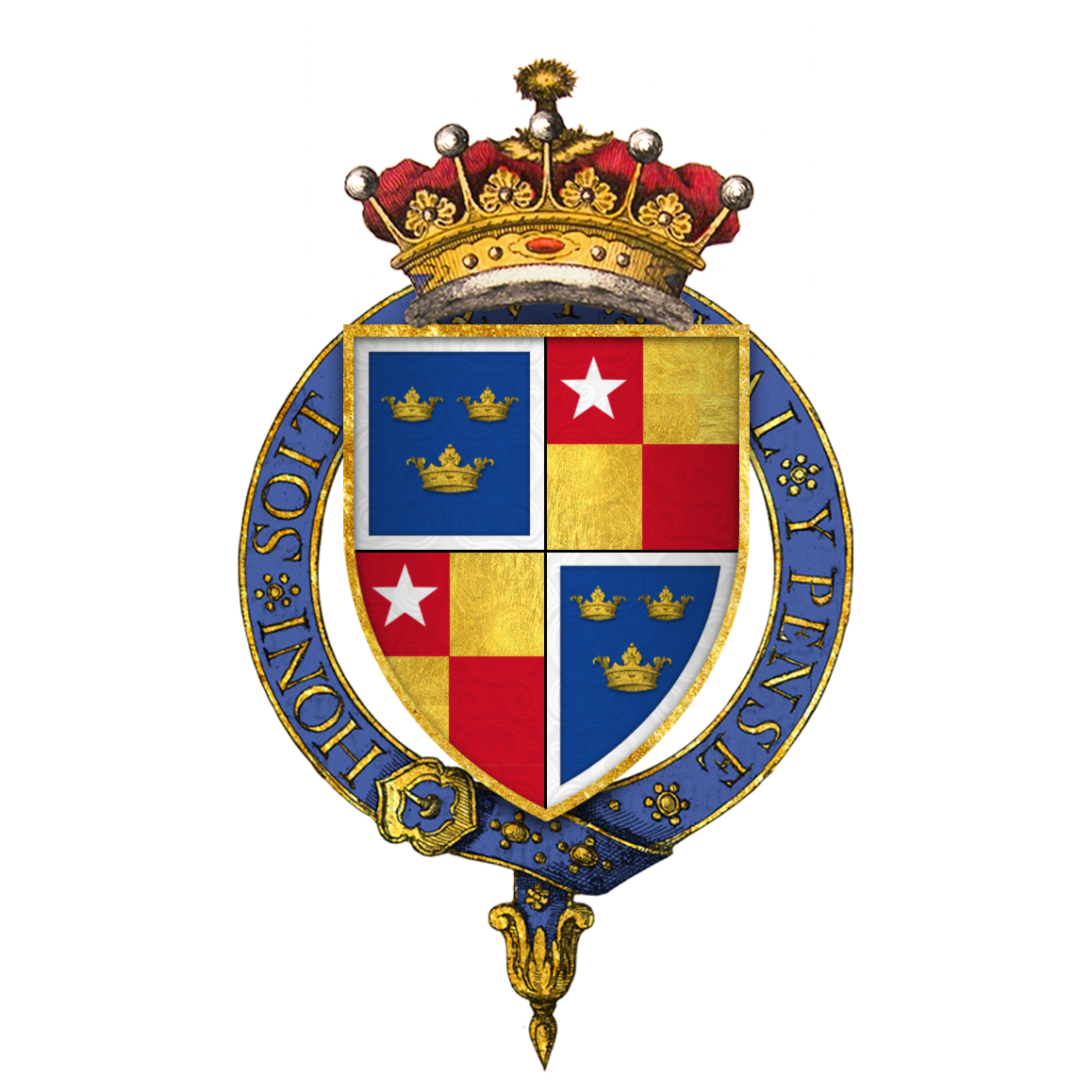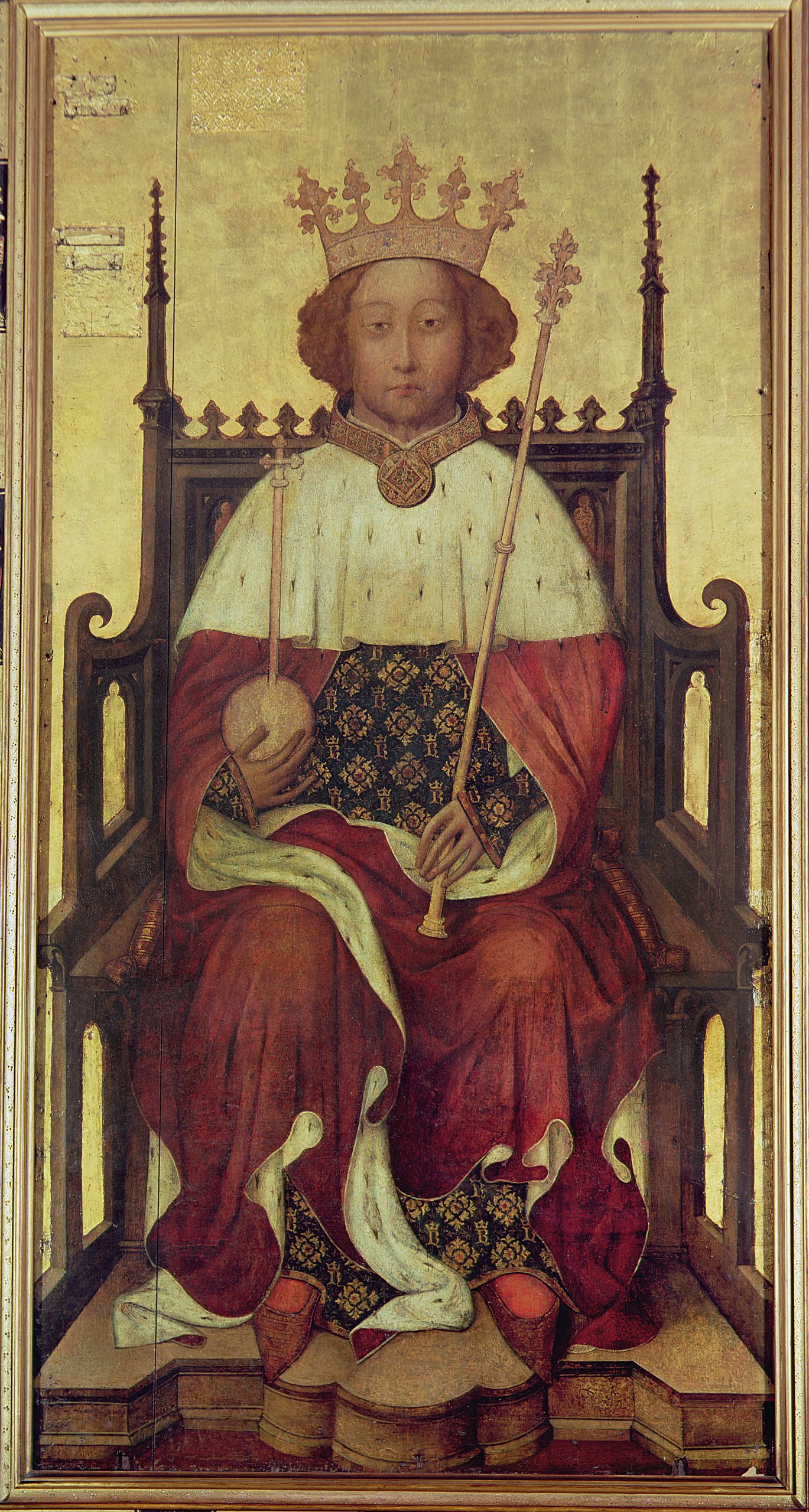St Edmund: patron saint of Ireland?
Published in Features, Issue 4 (July/August 2020), Volume 28The English saint has a surprisingly long history in Ireland.
BY FRANCIS YOUNG

Above: St Edmund’s chapel in Christ Church Cathedral, Dublin, added in the last two decades of the twelfth century. (Tim Leary)
Ireland’s patron saint, St Patrick, is today internationally synonymous with the country he represents—to a greater extent, perhaps, than any other nation’s patron saint. Yet in the fourteenth century the English in Ireland made an audacious (and ultimately unsuccessful) attempt to make an English saint into Ireland’s new patron. That saint was Edmund, an Anglo-Saxon king of East Anglia who was shot to death with arrows by the Vikings in 869. In spite of his origins in the east of England, St Edmund has a surprisingly long history in Ireland. A hoard of coins minted by tenth-century Vikings in memory of St Edmund was dug up in County Offaly in the nineteenth century—a reminder of the close links between the English Danelaw (where Edmund’s cult began) and the Hiberno-Norse settlers in Ireland. The saint may have been known in Norse Dublin as early as the eleventh century, where bishops trained in England were appointed under the authority of the archbishop of Canterbury, and he receives a brief mention in the Martyrology of Gorman.
Anglo-Norman invasion

Above: In the late twelfth century William de Burgh established an Augustinian priory at Athassel, a vast complex of monastic buildings on the River Suir near Cashel, Co. Tipperary, which was destined to become the centre of the cult of St Edmund in Ireland for the next 300 years. (Alamy)
It was the Anglo-Norman invasion in 1169–70, however, that really brought St Edmund to prominence in Ireland. A chapel dedicated to the saint was added to Christ Church Cathedral, Dublin, in the last two decades of the twelfth century. It is possible that devotion to St Edmund was brought back to Ireland by a group of Hiberno-Norman knights who fought under the banner of St Edmund to save the abbey of Bury St Edmunds from a hostile army in 1173. Another possibility is that the chapel was partly paid for by English merchants from East Anglia (as merchants from Chester had paid for the church of St Werburgh), or perhaps the dedication to St Edmund was some sort of assertion of English royal authority.
By the end of the eleventh century, Edmund was accepted throughout Europe as the patron saint of England and its surrounding seas, and his shrine church at Bury St Edmunds, Suffolk, was the largest Romanesque church ever built. Some of the Anglo-Norman barons intent on carving out territories in twelfth-century Ireland came from East Anglia. In 1185 an Anglo-Norman knight from Norfolk, William de Burgh (d. 1206), arrived in the retinue of Richard I’s brother, Prince John. William took his name from the Norfolk village of Burgh-next-Aylsham and became the progenitor of the vast dynasty of Burkes/Bourkes. John appointed William seneschal of Munster, and the Norfolk knight founded two churches dedicated to St Edmund—one at Ardoyne, Co. Carlow, and the other at Athassel, Co. Tipperary, where he installed a priory of Augustinian canons around 1200. Athassel, a vast complex of monastic buildings on the River Suir near Cashel, was destined to become the centre of the cult of St Edmund in Ireland for the next 300 years. William de Burgh’s devotion to St Edmund was unsurprising given his East Anglian origins, but Edmund’s position as a national patron of England gave Athassel a special status for the English of Ireland.
Richard II
It was not until the reign of Richard II (1377–99), however, that the English attempted to make St Edmund the patron saint of Ireland as a whole. In the year of Richard’s accession, a monk of Bury St Edmunds claimed that Athassel Priory was in possession of a miraculous image of St Edmund—miraculous because just before the death of the head of the family that founded the priory, the Burkes of Clanwilliam, the image of St Edmund would allegedly hurl the spear it was holding onto the pavement of the choir. The monastic scribe explicitly identified St Edmund as the patron saint of Ireland, describing him as ‘the protector and defender of that whole land’, using the Latin word patria (‘fatherland’). This word clearly referred to the island of Ireland itself rather than just the territory controlled by the Burkes of Clanwilliam.
The claim that St Edmund was the patron saint of Ireland could easily be dismissed as the ramblings of an English monk eager to promote the saint and out of touch with Irish affairs. Nine years later, however, in 1386, Richard II awarded the title ‘duke of Ireland’ to his favourite, Robert de Vere, earl of Oxford. This was more than just a noble title, since Richard also handed over his royal title ‘lord of Ireland’, first claimed by Henry II. As a mark of Robert’s new authority, Richard gave him the right to quarter his coat of arms with the arms of St Edmund (three gold crowns on a blue background), but only for as long as he remained ‘lord of Ireland’. From 1460 the three crowns of St Edmund appeared on coins minted in Dublin in the name of the English king as lord of Ireland.
Richard II’s use of the arms of St Edmund to denote his royal title to Ireland made sense, since the three crowns of St Edmund were a recognised emblem of English royalty (used from as early as 1276) but were not part of the Plantagenet royal coat of arms. The application of the arms of St Edmund to Ireland was a way of placing Ireland under the authority of the English Crown without confusing the king’s Irish title with his English ones. Furthermore, St Edmund and his banner had a historic association with English campaigns of conquest. Richard I (‘the Lionheart’) had dedicated his crusading fleet to Edmund in the twelfth century, while Edward I raised Edmund’s banner on Caerlaverock Castle in 1300 during his conquest of Scotland and declared that Edmund was fighting alongside the English army.

Above: The coat of arms of Sir Robert de Vere, 9th earl of Oxford, appointed ‘duke of Ireland’ in 1386 by Richard II, who gave him the right to quarter his coat of arms with the arms of St Edmund (three gold crowns on a blue background).
The attempt to impose St Edmund as a patron saint on Ireland was a failure—and not just because St Patrick was already so well entrenched. St Edmund’s significance was steadily declining in England from the middle of the fourteenth century. Although Richard II and Henry VI (1422–61 and 1470–71) were devoted to St Edmund, by the fifteenth century St George was well established as the patron saint of the Order of the Garter and of England’s military. From 1474 England’s standing army in Ireland was known as the Brotherhood of Arms of St George, and when the Irish parliament enacted a law in 1494 requiring soldiers to call on their king and patron saint (rather than their lord) in battle, that patron was St George rather than St Edmund. George’s indelible association with Englishness, along with his universal appeal, rendered Edmund increasingly obsolete. When Henry VIII declared himself ‘king of Ireland’ in 1542 the three crowns of St Edmund disappeared from Irish coinage, to be replaced by the familiar harp; but if a seventeenth-century source is to be believed, the original meaning of the three crowns was already forgotten by this time and Henry’s officials thought that they represented the triple tiara of the pope and therefore the papacy’s long-standing claim to Ireland as a papal fief.
Link to Munster flag

Above: Richard II (1377–99)—it was not until his reign that the English attempted to make St Edmund the patron saint of Ireland as a whole. (Bridgeman Library)
In spite of Edmund’s failure to become Ireland’s patron saint, traces of the medieval influence of the cult of St Edmund linger in modern Ireland. The flag of Munster (three gold crowns on a blue background—identical to the coat of arms of St Edmund) is first recorded in the seventeenth century. Its origins are murky, but it may be linked to the Butler family (who, as earls of Ormond, were the dominant ‘Old English’ dynasty in Munster). The Butlers replaced the Burkes as patrons of Athassel Priory early in the sixteenth century; one interpretation of the Munster flag is that it originated as an invocation of the patronage of St Edmund by the Butlers. Although Henry VIII adopted the harp as the arms of the new kingdom of Ireland in 1541, he retained the heraldic colours (gold and blue) of the arms of St Edmund previously used by the lordship of Ireland; those colours remain on the standard of the president of Ireland to this day.
A further trace of the once-prominent cult of St Edmund in Ireland is the name Éamon (the Irish equivalent of Edmund), which has been popular in Ireland since the fourteenth century. Éamon was one of the few male names of English origin to gain widespread popularity in Gaelic Ireland in the Middle Ages. It is very unlikely that many modern Éamons are named after Ireland’s would-be medieval patron saint, but the earliest individuals to bear the name in Ireland were members of the Anglo-Irish dynasties of Burke/Bourke and Butler, both of whom were patrons of Athassel Priory. The earliest Gaelic Irish families to adopt Éamon as a forename were the septs of Ó Broin (O’Byrne) and Ó Cinnéide (O’Kennedy), clients of the Butlers of Ormond.
By the time Douglas Hyde was complaining about the Anglicisation of the good old Irish name Éamon to Edmund, Edmond or Neddy in the 1890s, the name’s Anglo-Saxon origins were irrelevant. Éamon was received as a distinctively Irish name, its English origins forgotten—the ultimate symbol of England’s failure to impose St Edmund on Ireland as a patron saint. The medieval project of Anglicising Ireland ultimately failed not because the Irish resisted Anglicisation but because Irish culture thoroughly absorbed and Gaelicised English influences. The cult of St Edmund was no different. By the fifteenth century, hemmed in on every side by Gaelic Irish lords, Athassel Priory was no longer in any meaningful sense an ‘English’ institution, and the priory’s patron seems to have faded from memory. By the nineteenth century, although a vague memory of St Edmund still lingered, local people were confusing the martyr with St Edward the Confessor. St Edmund’s brief stint as patron saint of Ireland in the late Middle Ages had long since been forgotten.
Francis Young is the author of Athassel Priory and the cult of St Edmund in medieval Ireland (Four Courts Press, 2020).
FURTHER READING
A. Bale, St Edmund, king and martyr: changing images of a medieval saint (Woodbridge, 2009).
F. Young, Edmund: in search of England’s lost king (London, 2018).
















